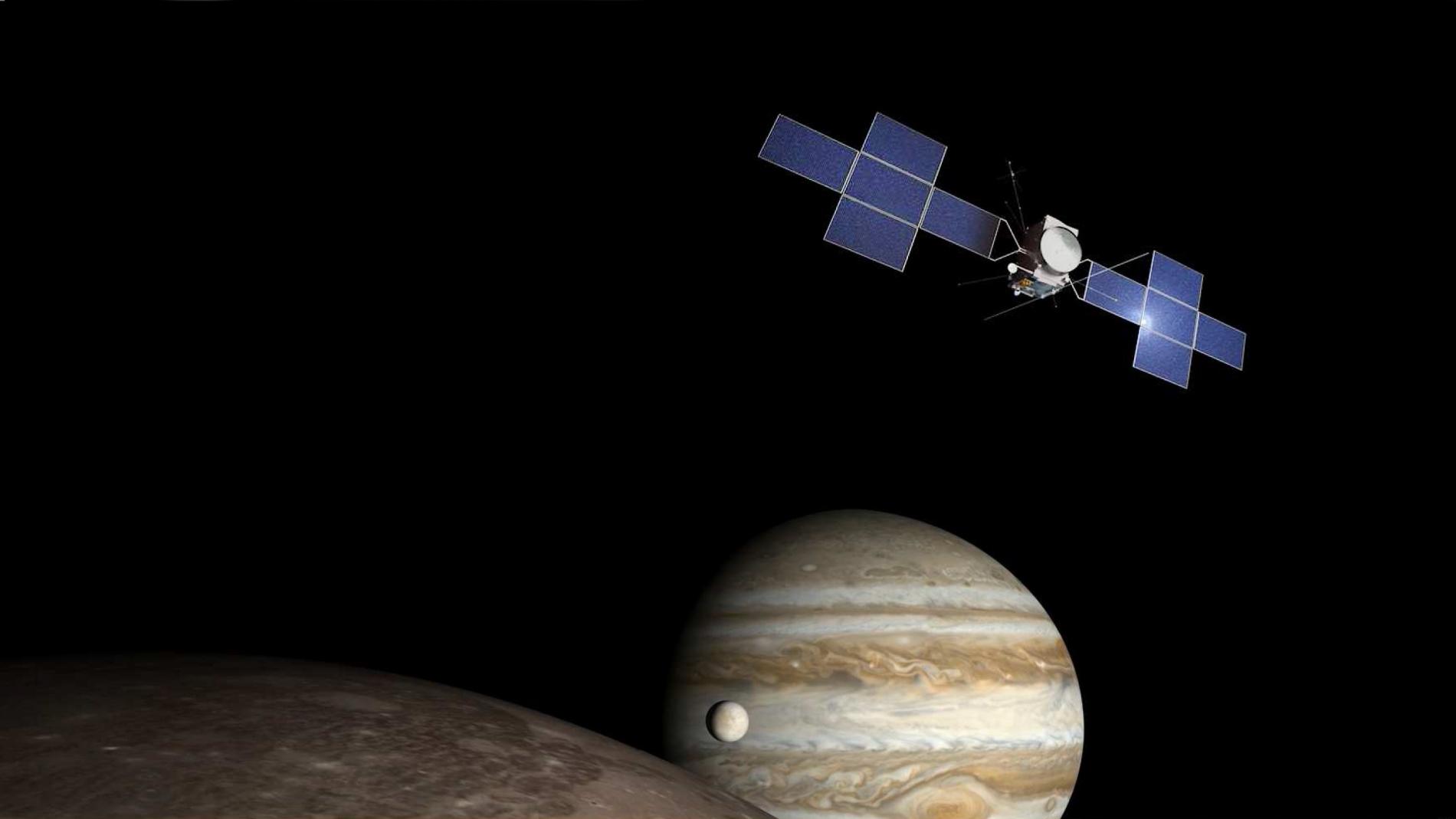Juice mission prepares for its extreme environmental test
JUICE, a European Space Agency (ESA) mission to be launched in September 2022, will study Jupiter and its moons to analyse the possibilities for the development of life around gas giant planets. The Institute de Astrophysics de Andalusia (IAA-CSIC) is participating in two of the mission's instruments, the GALA laser altimeter and the JANUS camera
Juice, the Jupiter Icy Moons Explorer, arrived "home" this month at the European Space Agency's (ESA) technical centre in the Netherlands. The spacecraft will undergo extreme environmental testing in Europe's largest thermal vacuum chamber to prepare for its journey to the outer Solar System. The Institute de Astrophysics of Andalusia (IAA-CSIC) is the only Spanish institution contributing technologically to the mission, while scientifically researchers from the IAA-CSIC and the University of the Basque Country are participating.
The mission arrived at ESTEC, ESA's European Space Research and Technology Centre, from Airbus Friedrichshafen (Germany). It is now being unpacked and prepared for access to the space simulator at the end of this month, where it will spend several weeks undergoing extreme vacuum heating and cooling cycles. This process confirms that the spacecraft is ready for its long journey through the Solar System to Jupiter. Juice will remain at ESTEC until July, before being transported to Toulouse for its final round of testing. From there it will travel to the European spaceport in French Guiana, to be launched on an Ariane 5 rocket.
Once in the Jovian system, the mission will make detailed observations of the gas giant planet and its three large oceanic moons (Ganymede, Callisto and Europa) with a suite of remote sensing, geophysical and local instruments. The mission will investigate, on the one hand, the appearance of habitable worlds around gas giants and, on the other hand, the Jupiter system as an archetype of the numerous giant exoplanets orbiting other stars.

SPANISH PARTICIPATION
The Institute of Astrophysics of Andalusia (IAA-CSIC) is part of the international consortia building two of the instruments that form part of the Juice geodetic instrumentation package: the medium-high resolution visible space camera JANUS (led by Italy) and the laser altimeter GALA (led by Germany).
"GALA and JANUS will work complementarily to study the surface and interior of the satellites. JANUS will also analyse the planet's atmosphere and obtain complementary data from other instruments on the mission", says Luisa Lara, a researcher at the Institute of Astrophysics of Andalusia (IAA-CSIC) who is participating in the mission.
The IAA has developed the power supply for both instruments, as well as the filter wheel, designed and manufactured entirely at the IAA, and the control electronics for the JANUS camera.
JUICE TEAM AT THE IAA:
J.M. Castro, M.L. Herranz, F. Alvarez, I. Bustamante, A.J. García-Segura, P.J. Gutiérrez, J. Jiménez, I. Martínez-Navajas, J. Rodrigo y L. M. Lara.
INDUSTRIAL PARTICIPATION:
SENER Ingeniería y Construcción.
Instituto de Astrofísica de Andalucía (IAA-CSIC)
Unidad de Divulgación y Comunicación
Silbia López de Lacalle - sll[arroba]iaa.es - 958230676
https://www.iaa.csic.es
https://divulgacion.iaa.csic.es

